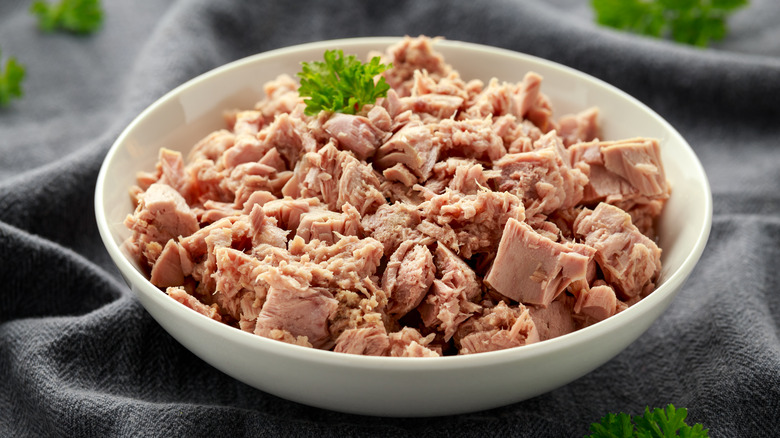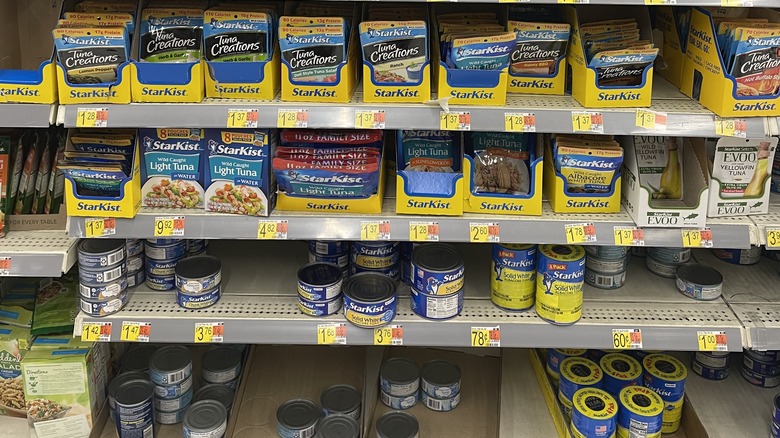Is There A Difference Between Pouched And Canned Tuna?
A staple of lunch boxes and pantries, canned tuna owes it popularity in part to its versatility and budget-friendly price. Canned tuna is also quite nutritious, high in protein, yet low in calories and fat: a 4-ounce serving of white (or albacore) tuna contains more than 26 grams of protein with just 145 calories and less than 4 grams of fat (via WebMD). Canned tuna is also a good source of omega-3 fatty acids, along with important vitamins and minerals.
In 2000, reports Just Food, StarKist introduced tuna in a vacuum-sealed foil pouch, which made tuna even easier to store, stash, and enjoy. Since introducing tuna pouches, StarKist has seen its sales increase by 10% per year, notes Food Dive. Other manufacturers followed suit and started offering pouched tuna as well. Both canned and pouched tuna remain incredibly popular in the US, with Americans consuming around a whopping 1 billion pounds of canned and pouched tuna annually, according to the National Fisheries Institute. However, you may be wondering, is there any difference between pouched and canned tuna?
There are some differences between pouched and canned tuna
Both canned tuna and pouched tuna must be heated first to kill off bacteria, explains Live Strong. However, since heat can penetrate the thin material on the pouch more easily than cans, pouched tuna requires a shorter cooking and processing time, which leads to a fresher and firmer tasting product, according to Just Food. Live Strong adds that canned tuna also needs added water inside the can to block out air, while no additional water is added to pouched tuna, which may make pouched tuna a better candidate for tuna salad, since you want to fully drain the tuna can for tuna salad to avoid a tuna salad that's too watery, though you may want to add a bit more mayonnaise.
Per the National Fisheries Institute, canned tuna, provided it remains unopened and stored under normal conditions, has a recommended shelf life of four years, while pouched tuna has a shelf life of three years. Pouch tuna also tends to be more expensive than canned tuna, with Live Strong noting that pouched tuna costs nearly double as much as canned tuna on a per-ounce basis. Tuna pouches also take up less space than tuna cans, though cans provide more protection than pouches. Pouches are also not recyclable, while cans are.

